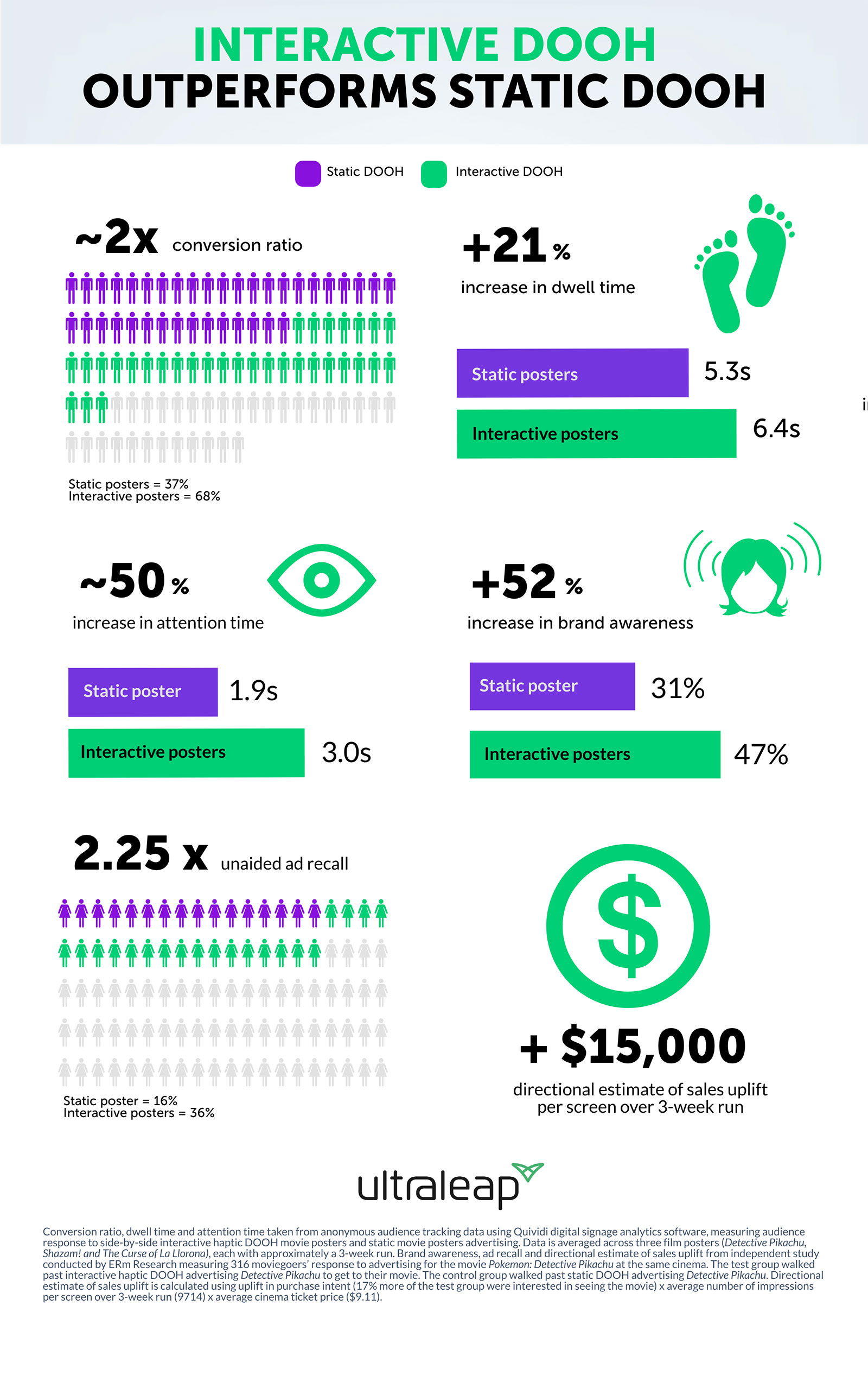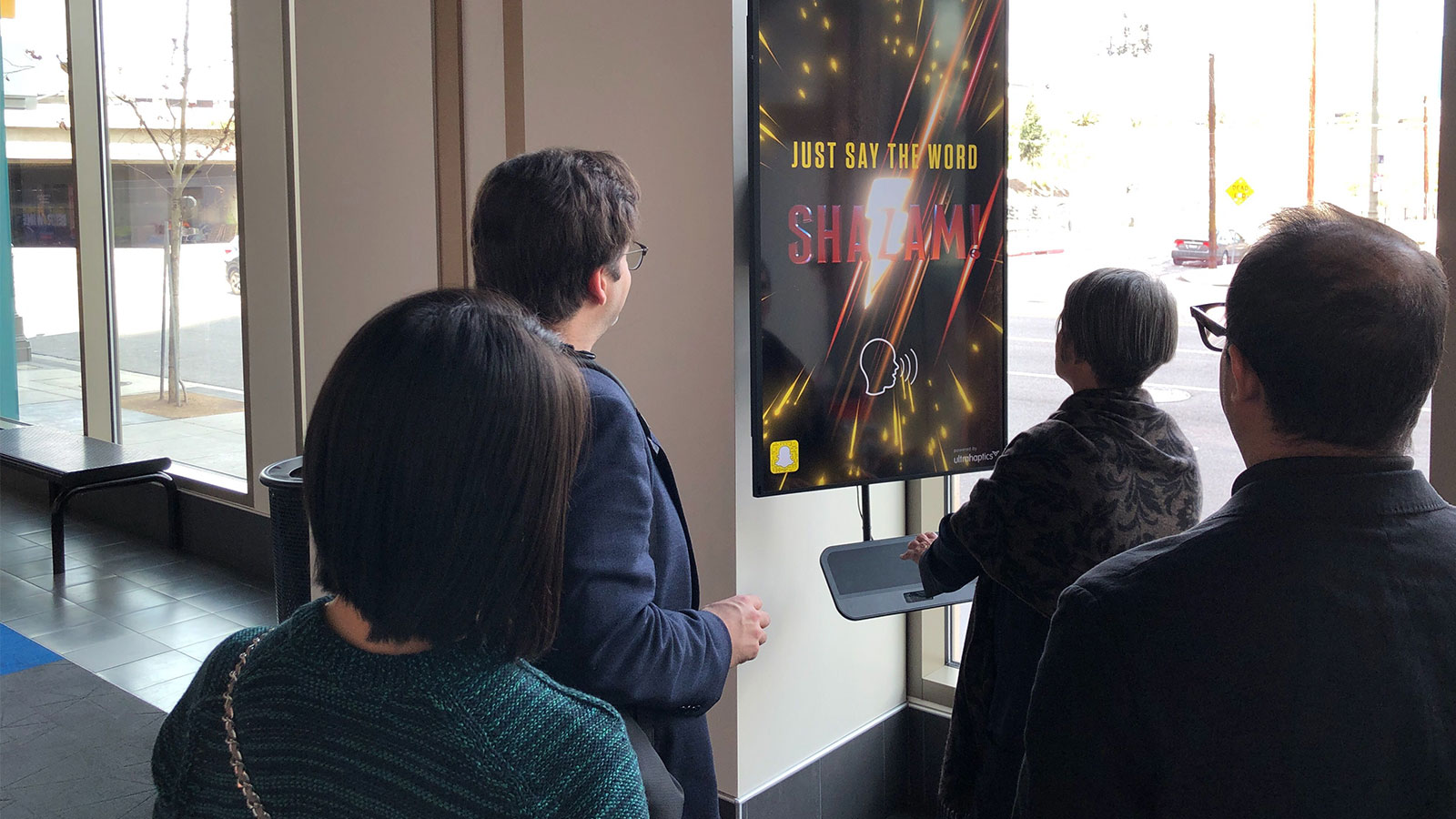
Interactivity Adds Measurable Value in DOOH [Study]
Posted; April 27, 2020
Our large-scale study in a top-tier multiplex cinema in downtown LA showed that out-of-home screens with touchless interactivity are more addressable, more actionable, and more attributable. Saurabh Gupta, Director of Product at Ultraleap, gives an overview of the results.
Interactive DOOH outperforms static DOOH
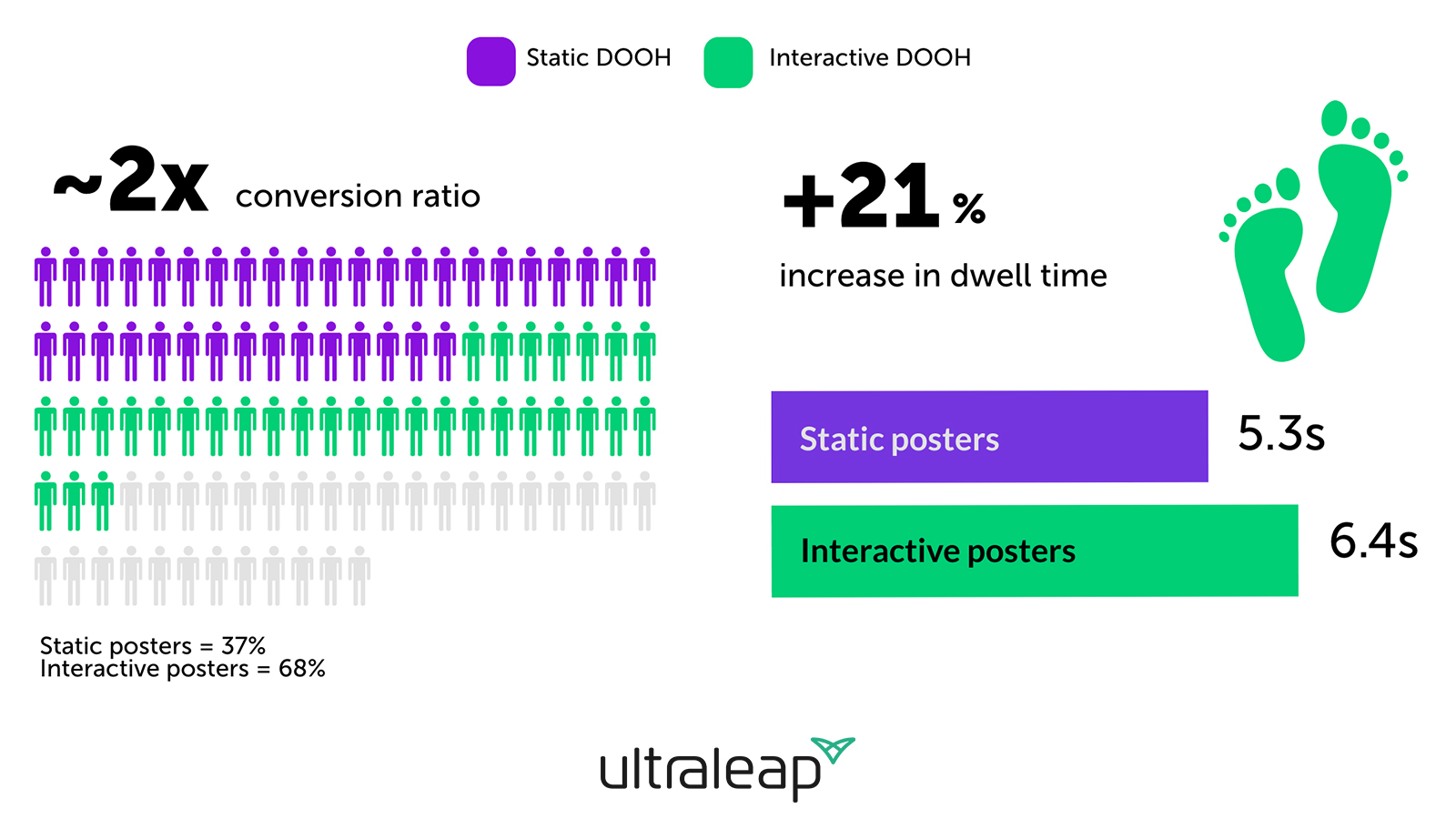
In 2018, spend on digital out of home (DOOH) advertising overtook traditional out of home advertising. But with digital screens everywhere, advertisers are now looking for new ways to connect with customers.
Almost every prediction points to interactive and experiential advertising as a key trend in DOOH. Given the dramatic effect interactivity has had in other channels (such as mobile and TV advertising), it would be expected that the impact of interactive digital signage would also be positive.
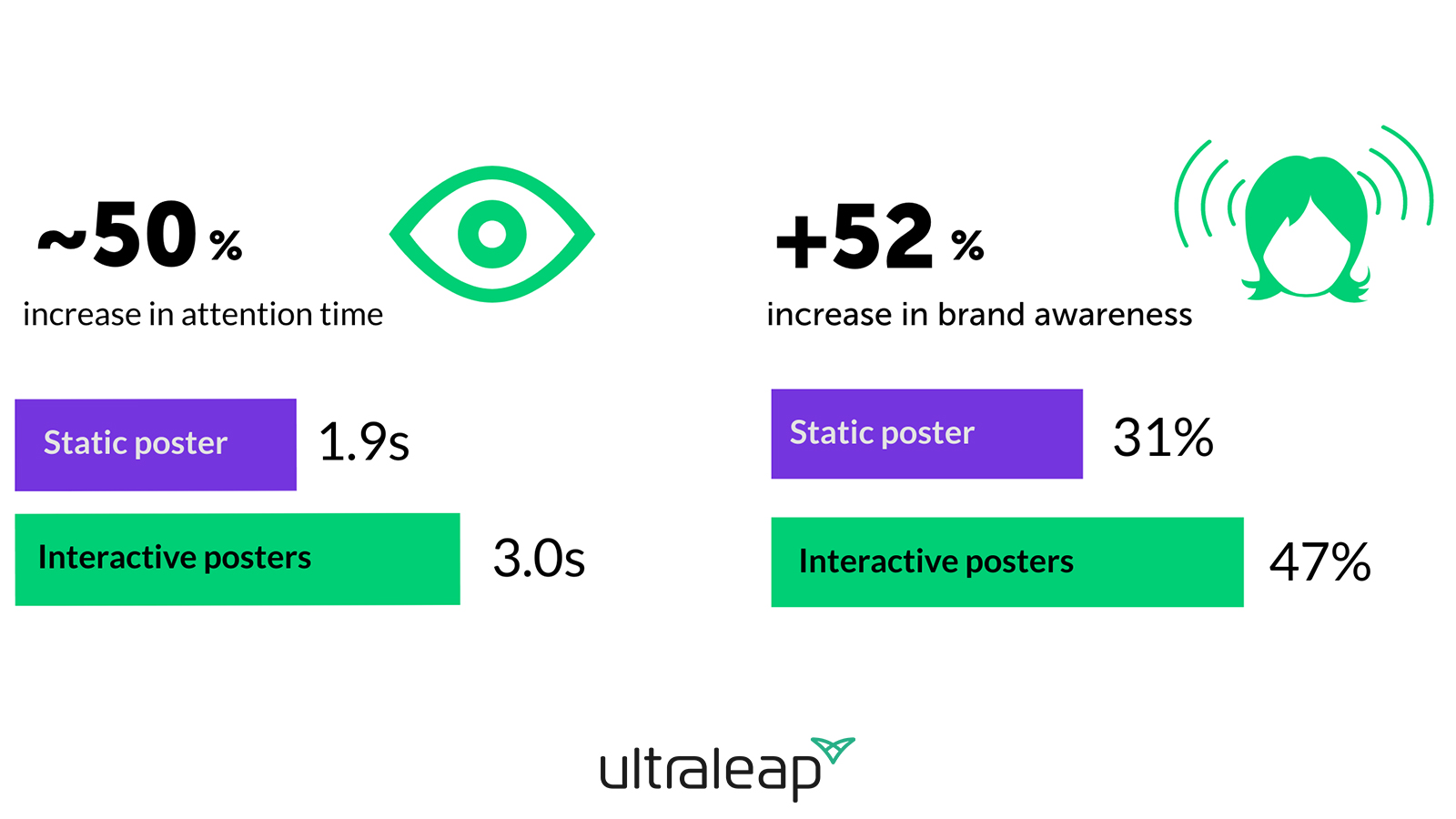
There are very few studies, however, that analyse the impact of interactive versus static digital signage. Since interactive digital signage typically involves additional hardware, software or creative development costs, this is an important piece of information.
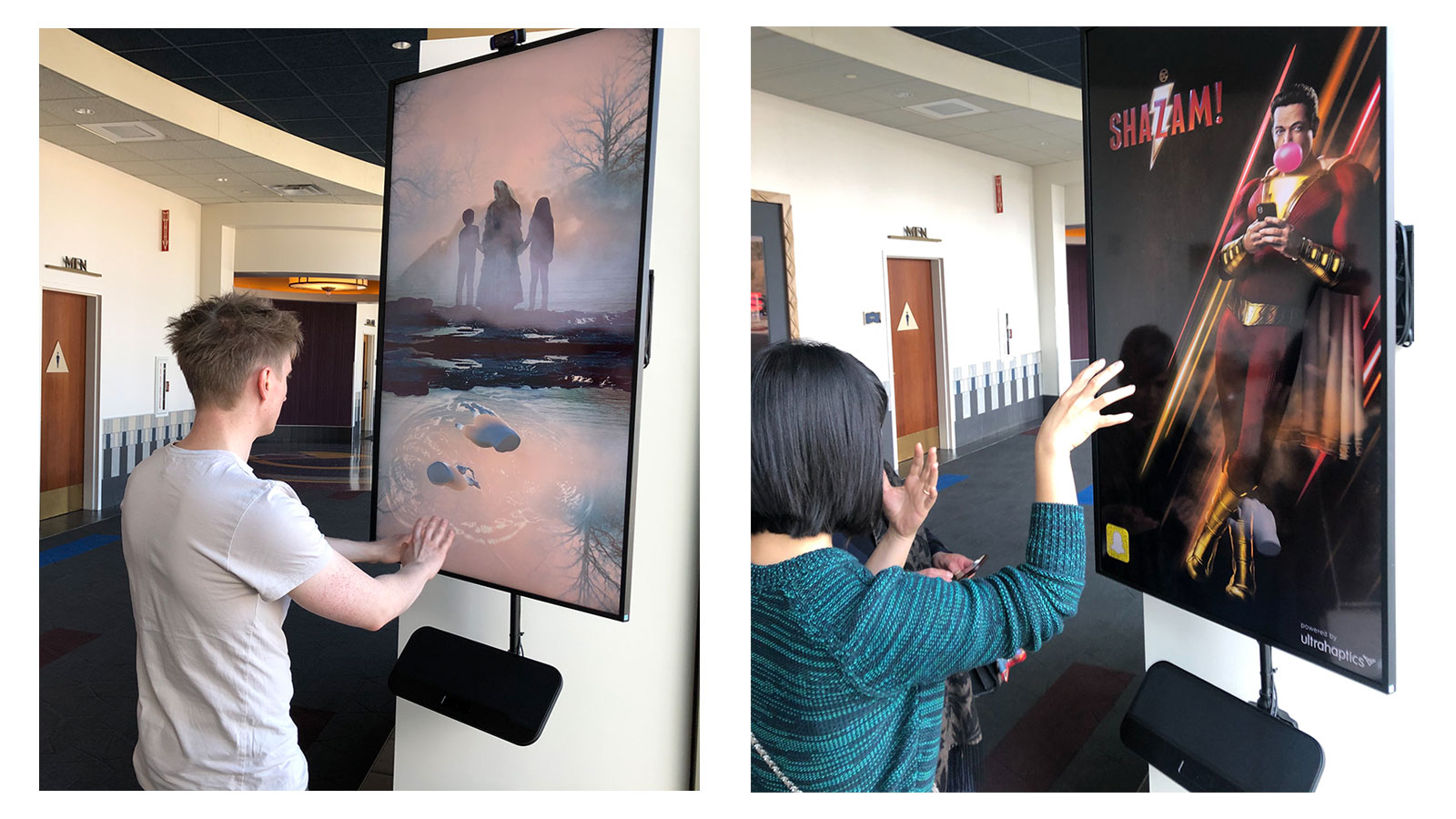
Powered by Ultraleap’s touchless technologies (hand tracking and mid-air haptics), we conducted a large-scale piece of research at a top-tier, 14-screen multiplex cinema in downtown Los Angeles. The study explored visitors’ reactions to interactive compared to static digital movie posters advertising the releases Pokémon: Detective Pikachu, Shazam! and The Curse of La Llorona.
Visitors could interact without touching any surfaces – an important feature in a post-pandemic world, where just 12% of people now think public touchscreens are hygienic.
We found that interactive digital signage moves the needle across a range of measures, from dwell time all the way through to purchase intent. In the cinema lobby context, this ultimately resulted in a directional estimate of sales uplift of up to $15,000 per interactive screen over the course of a typical 3-week campaign.
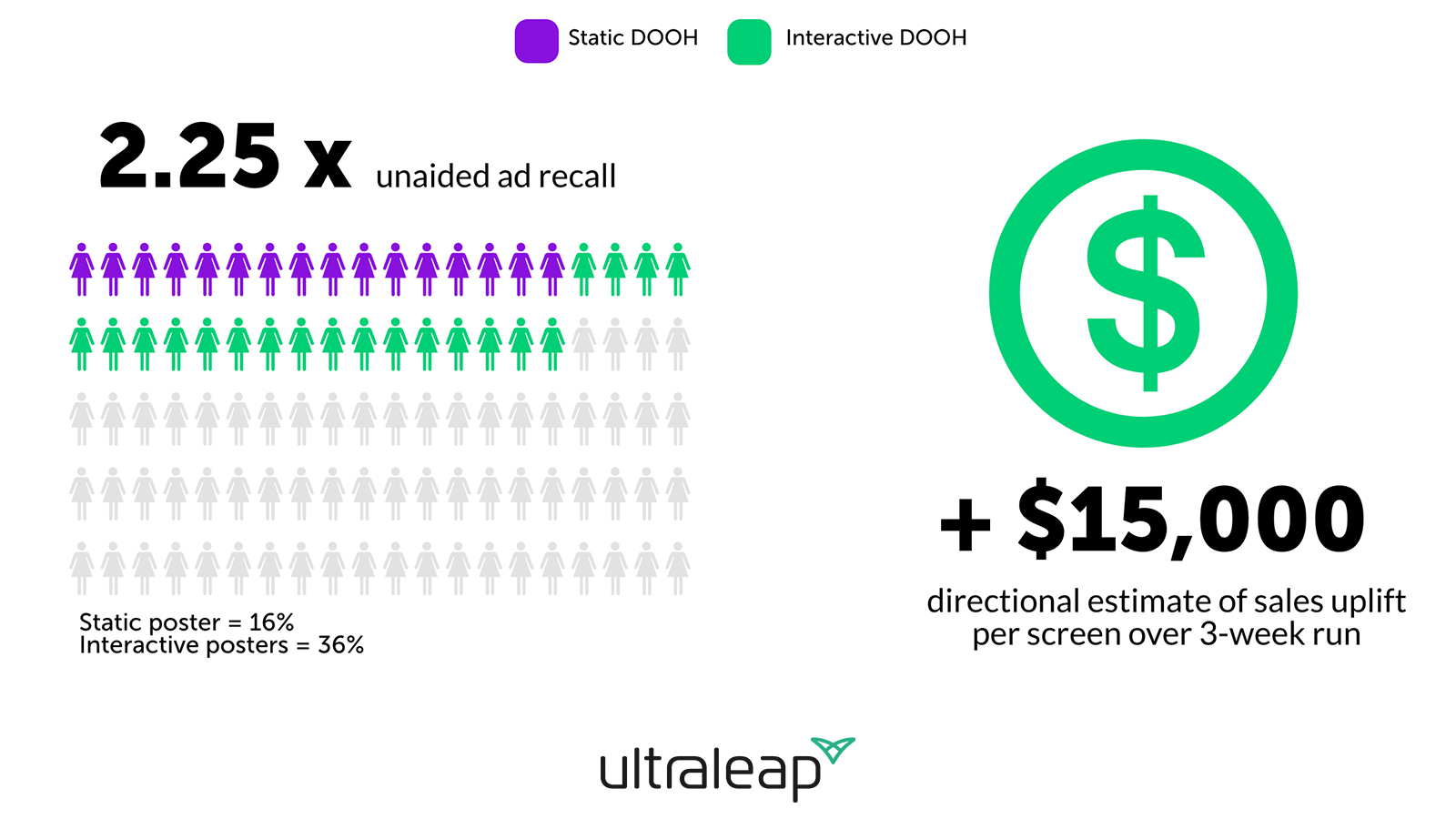
Interactive DOOH can also be used to generate a new form of audience data. This is the length of time users’ hands are interacting with content, which we term interaction time. It’s a near-field measurement that can be used in conjunction with far-field measurements generated by other audience measurement platforms (such as Quividi) to give a more nuanced picture of audience engagement.
Millennials are digital natives looking for richer ways to connect with brands, and interactivity enables dialogue and emotional engagement. At the same time, in a post-COVID-19 world, consumers are rightly anxious about using public touchscreens. Our research shows that touchless interactivity can be proven to translate into meaningful commercial results.
Quantifying the value interactivity adds to DOOH [Whitepaper]
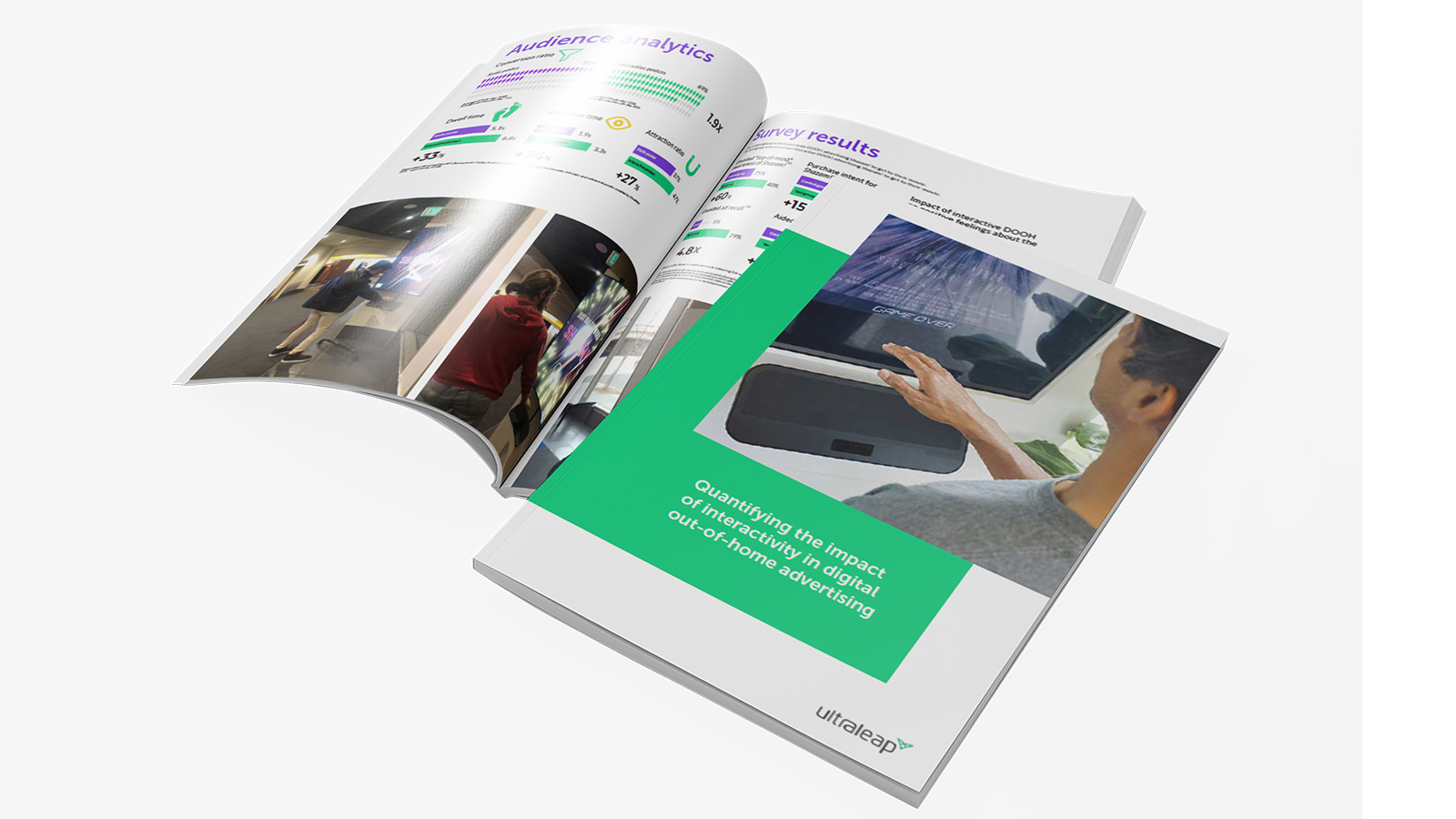
Large-scale research in a major movie theatre analyzes how interactive digital out-of-home advertising outperforms static ads.
